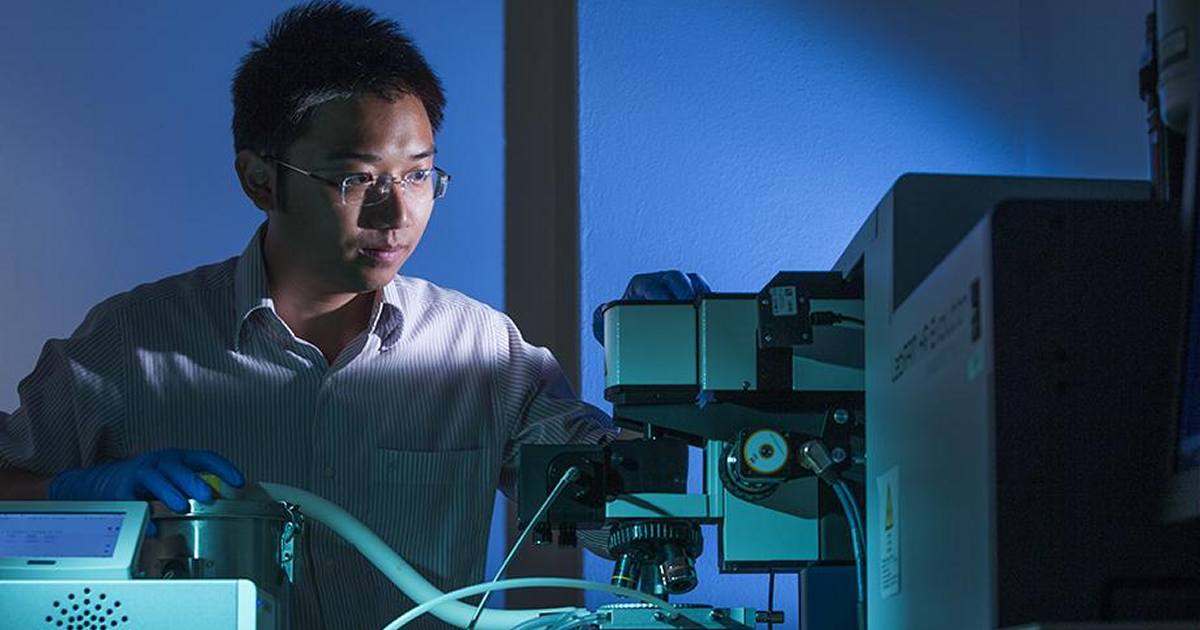
Dr Hieu Nguyen | ANU/Lannon Harley
The Australian Renewable Energy Agency has provided a bundle of cash to support three more Australian National University solar research projects.
ARENA is contributing $3.6 million from its Australian Centre for Advanced Photovoltaics Infrastructure project, and ANU is co-funding with $0.9 million.
Summaries of the projects:
Nano-Engineering Laboratory
$3.1 million will support a “one-of-a-kind” nano-engineering lab headed by Dr. Kean Chern Fong that will pursue the creation of new solar materials. Dr. Fong’s other work to date includes researching the development of high efficiency interdigitated back contact (IBC) solar cells and characterisation and modelling of silicon solar cells.
The Light Stuff
Dr Hieu Nguyen and his team have scored $1 million for acquiring equipment that will enable more precise measurements of the light absorbed and emitted from solar materials. Dr Nguyen says the technology will enable another step towards fully unlocking the potential of photovoltaics.
“Because every part of light has features corresponding to certain material and device properties, we can diagnose their characteristics by just ‘looking at’ them, rather than touching them – thus avoiding possible damage,” said Dr. Nguyen.
Advanced Perovskite Processing
Perovskite based PV has been the “next big thing” for around a decade – but all good things take time they say and this technology is a great example of that. Perovskite solar cells have the advantages of being cheap and easy to produce, but one of the challenges has been their stability. That challenge remains, so it will be some way off before perovskite solar panels are ready for prime time and rooftops.
Associate Professor Tom White and his team were awarded $400,000 for an advanced perovskite processing capability tool that will enable the production high-efficiency tandem solar cells that combine silicon solar cells with very thin perovskite cells laid directly on top.
On a related note, last month perovskite developer Oxford PV set a new world record for perovskite-silicon tandem cell efficiency – a very impressive 29.52%.
ARENA’s Australian Centre for Advanced Photovoltaics (ACAP) project supports ‘over the horizon’ photovoltaic technology, plus training for the next generation of research scientists and engineers.
In October last year, ARENA awarded $3.2 million for five projects in the ANU College of Engineering and Computer Science. Those projects involve:
- simpler, safer and cheaper fabrication of next-generation silicon solar cells
- simplifying the processing of high-efficiency silicon cells
- commercially-viable silicon-perovskite tandem solar cells
- stability, durability and reliability of perovskite cells
- development of Heterocontact-Polysilicon Hybrid IBC solar cells
A number of breakthroughs have emerged from ANU over the years – and no doubt with sufficient ongoing funding we’ll see many more that will benefit not only Australia, but the world as we move towards a fossil-fuel free electricity future (and hopefully sooner rather than later).
Since 2012, ARENA has supported 566 projects with $1.63 billion in grant funding. The Agency says this has unlocked a total investment of almost $6.69 billion in the nation’s renewable energy industry.

 RSS - Posts
RSS - Posts



Speak Your Mind